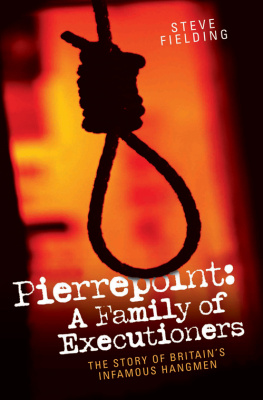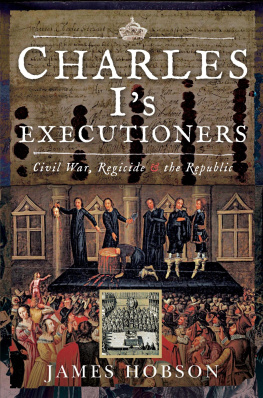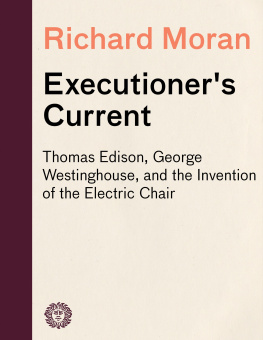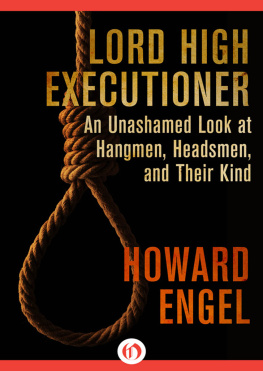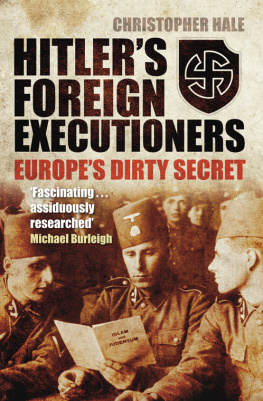I t was once termed a Highly Skilled Mystery; those who knew its closely guarded secrets called it the profession; and during the twentieth century it was one of the hardest jobs to occupy. A competent hangman had to have nerves of steel, a strong stomach and, in later days, a good head for maths. Hanging by the neck until dead developed from a crude and brutal strangulation from a tree branch watched by hundreds, sometimes thousands, of often rowdy spectators, to a cold, clinical operation viewed by just a handful of official witnesses. Death was scientific and a prisoner was sent to his or her death with a drop worked out to the exact half-inch.
But who were these people and how did they come to take up such a role? The Executioners Bible takes a look at how Britain recruited, trained and then disposed of its hangmen and assistants in the last century of capital punishment. It also looks at the crimes of those convicted and hanged, those often brutal killers, many of whose names have passed into the annals of criminal history. Much of the information contained in this book is being written about for the first time. Papers that were once deemed too confidential to be viewed are now easier to access, and with their opening we can begin to tell the real story of Englands executioners in the twentieth century.
Chapter 1:
Execution Protocol and History
D eath by hanging was the preferred form of punishment for convicted criminals in Great Britain since the dawn of Christianity. Supposedly introduced to these shores by the Anglo-Saxons, it was the usual punishment for commoners, noblemen being given a more honourable death by beheading. Over the years the practice of hanging a criminal by the neck until he or she was dead was refined to the extent that, by the turn of the twentieth century, a condemned criminal could be put to death in a quick, efficient and humane manner in times that were being measured in seconds.
During the Middle Ages there were a number of methods of execution: burning at the stake for witchcraft, beheading for treason, and most commonly hanging, often followed by the brutal drawing and quartering of the half-dead victim. In the sixteenth and seventeenth centuries there were often hundreds of executions carried out across the country each year, with the majority carried out at Tyburn.
Situated at the end of Oxford Street, adjacent to Marble Arch, where a plaque still stands to this day marking the spot, more than 2,000 people, including almost 150 women, were hanged at Tyburn in the eighteenth century, with the vast majority being men under the age of 30. The last person hanged at Tyburn was highwayman John Austin on 7 November 1783. From then on, executions in the City of London and the County of Middlesex were carried out outside Newgate Gaol.
In the nineteenth century, as the population almost tripled to more than 25 million, more than 4,000 men, women and occasionally children were hanged in Great Britain, and of these only around a third were hanged for murder. There were, at this time, more than 200 crimes that carried the death penalty. This high number was in the main due to the breakdown of crimes into more specific offences: theft from a shop, a warehouse, dwelling house and brothel, while being basically the same offence, were logged as separate offences. Similarly, with crimes of arson, burning down a house was distinguished from setting fire to a shop, or other type of building.
In reality, although the full range of offences included such obscure specific crimes as damaging London Bridge and impersonating a Chelsea Pensioner, there were fewer than 20 offences that resulted in the ultimate penalty. These were in the main murder and attempted murder; crimes of violence such as cutting and maiming (grievous bodily harm), along with arson, sex crimes, forgery, uttering (passing counterfeit monies) and coining. Likewise, a vast array of robbery offences was punishable by death, such as highway robbery (in many cases, this was street robbery), mugging, housebreaking and burglary, robbery in a dwelling house, and horse, cattle or sheep theft.
A hundred and twenty-nine people were hanged in 1800, and in the following year that number almost doubled. These figures fluctuated annually but there were still on average 80 executions a year in the years leading up to the ascension to the throne of Queen Victoria. As transportation first to America then later to Australia gradually became commonplace instead of a sentence of death, the number of executions began to decline to such an extent that in 1838 there were just six executions in the whole of England and Wales five for murder and one for attempted murder.
After 1840, only two people were executed for attempted murder: Sarah Chesham, who made an unsuccessful attempt to poison her husband at Chelmsford in 1851, and 26- year-old Irish tramp Martin Doyle, hanged at Chester ten years later for the horrific attempted murder of a woman at Holmes Chapel, Cheshire.


